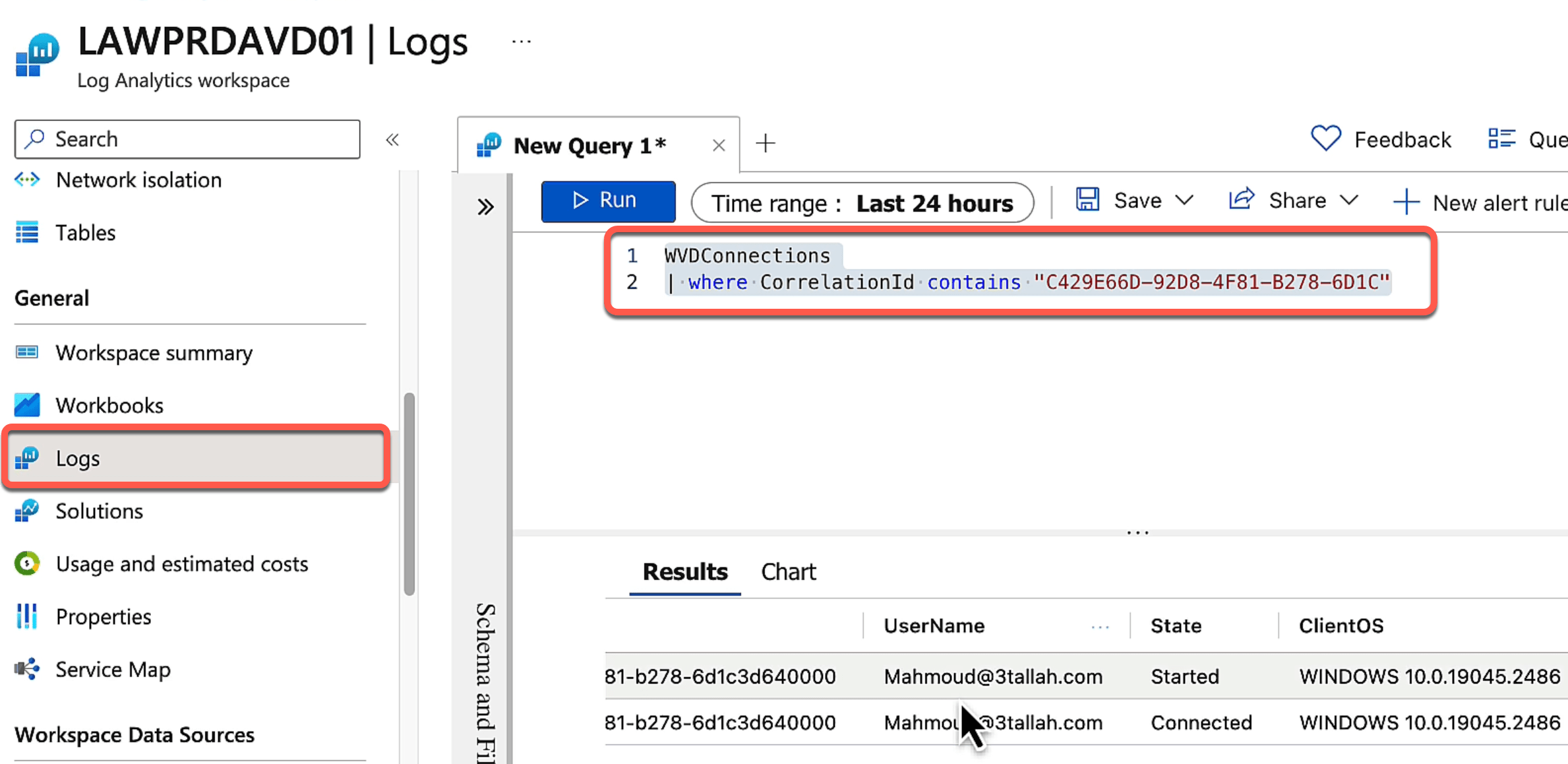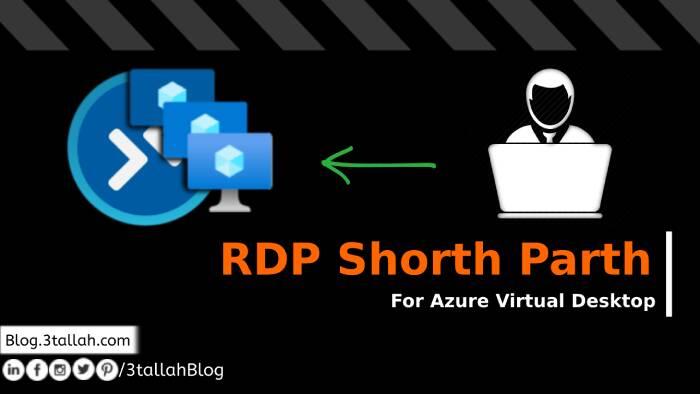Introduction:
With the current remote work trend, ensuring the security and compliance of remote sessions has become a top priority for organizations. Azure Virtual Desktop has stepped up to the challenge with its new Watermarking feature, which provides a new level of security and visibility in remote sessions. In this blog post, we’ll take a deep dive into what the Watermarking feature is, its benefits, how to set it up, and how it can revolutionize the way you work.
What is the Watermarking Feature?
The Watermarking feature is a new addition to Azure Virtual Desktop that allows you to add a watermark to your remote sessions, containing a QR code with your connection ID. This provides an additional layer of security by allowing an admin to trace back any unauthorized screen captures to the specific connection and user.
Why is the Watermarking Feature Important?
The Watermarking feature addresses the limitations of traditional screen capture protection and provides a new level of security and compliance in remote sessions. With this feature, organizations can ensure that their confidential information is protected and prevent any unauthorized access or data leaks.
Prerequisites:
Before you can use AVD watermarking, you’ll need the following:
- Windows Desktop client, version 1.2.3317 or later, on Windows 10 and later.
- Azure Virtual Desktop Insights is configured for your environment.
- Administrative template for Azure Virtual Desktop.
How to Set Up the Watermarking Feature
Setting up the Watermarking feature is simple and straightforward. Here are the steps to follow:
- Download and add the Administrative template for AVD
- Setting the policy setting “Enable watermarking” to Enabled
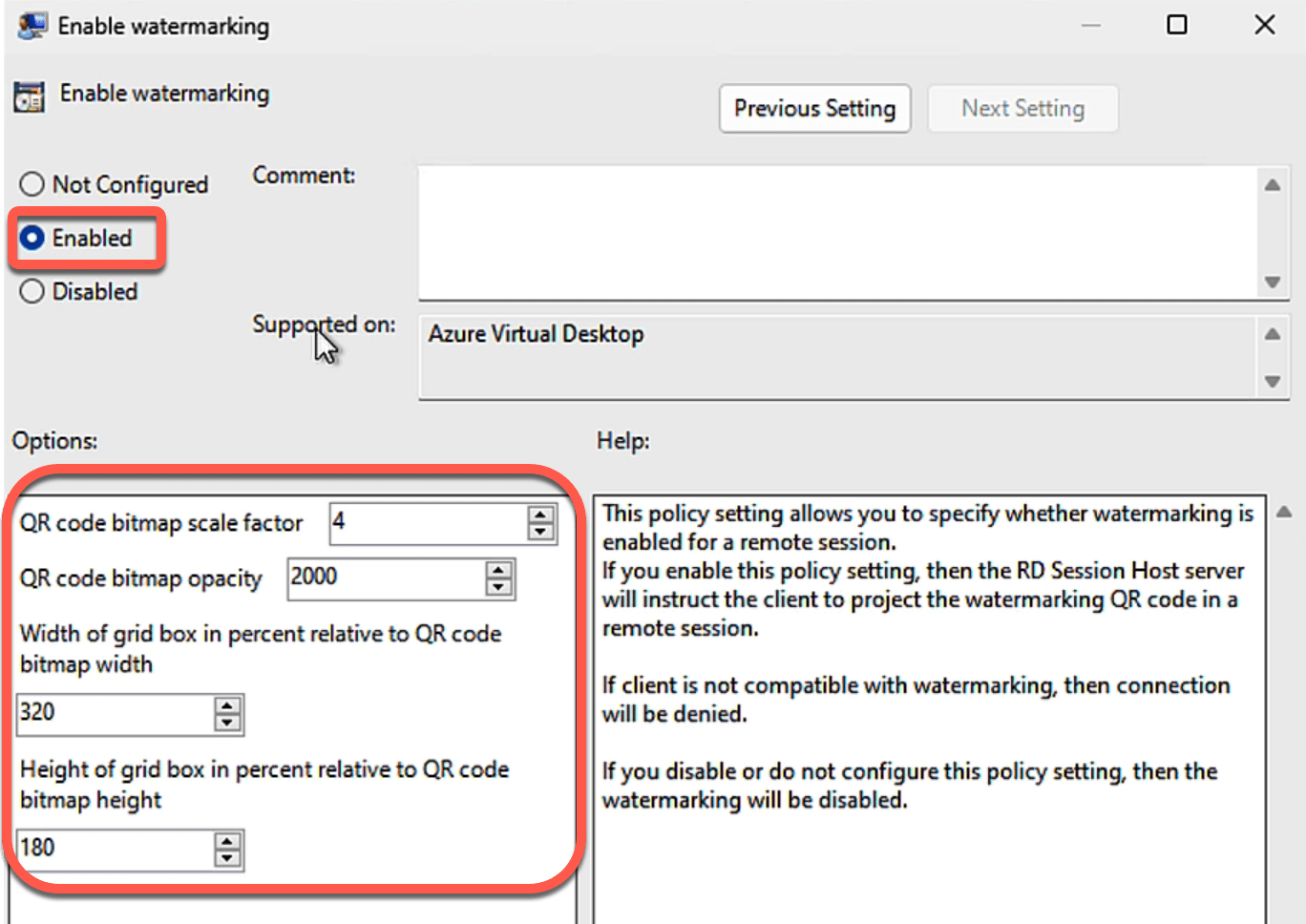
- Applying the policy settings to your session hosts.
- Push the Policy to the client by running a Group Policy update or Intune device sync.
- Connect to a remote session, where you should see QR codes appear and validate the QR Functionality
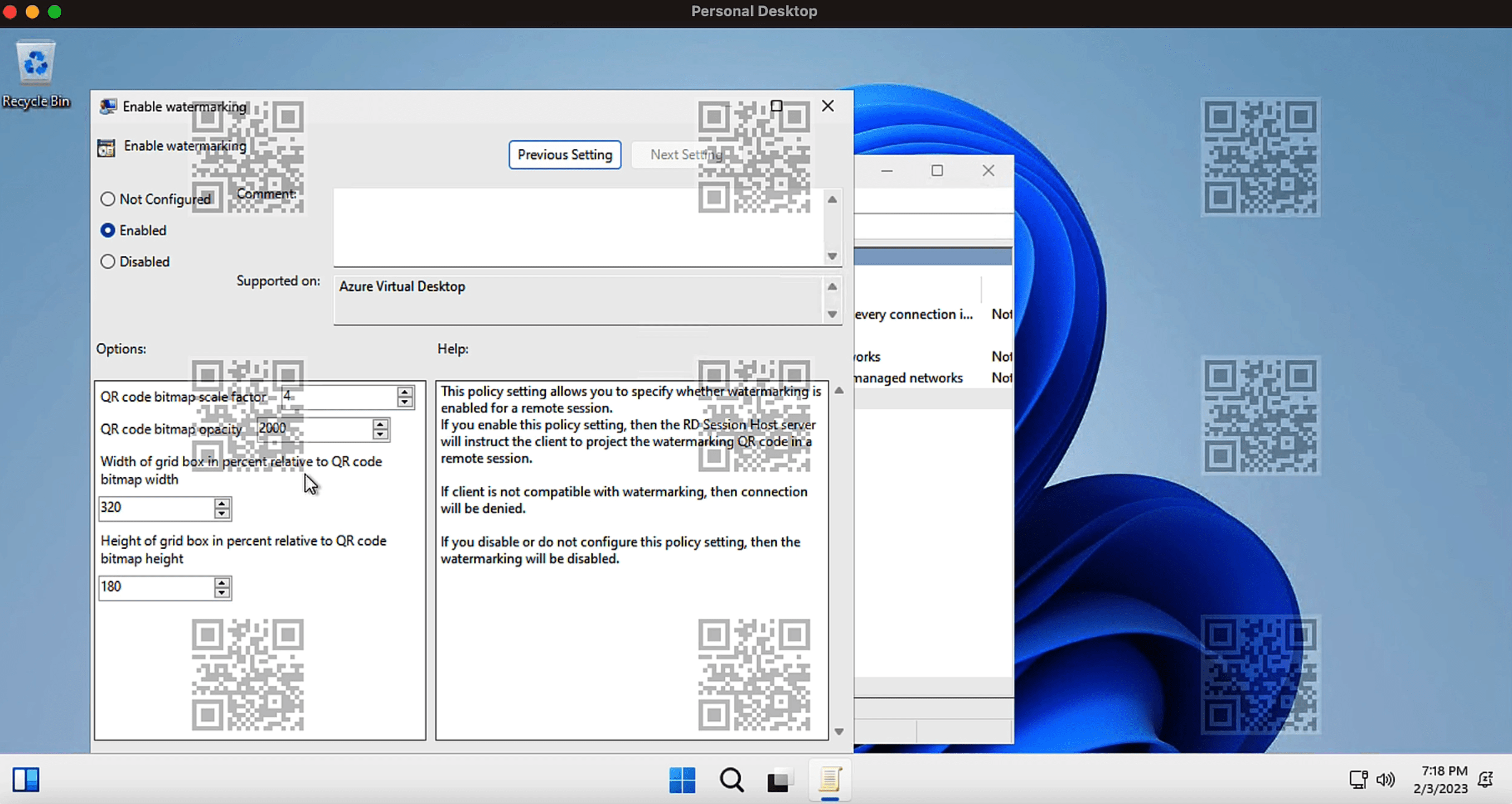
- Use the QR code to find session information.
- Connect to Azure Virtual Desktop Insights for connection diagnostics.
- Get session details using Azure Log Analytics.
Connection Diagnostics using QR and AVD Insights:
- Open Azure Virtual Desktop Insights using this link https://aka.ms/avdi
- Select the relevant host pool and time range, then select the Connection Diagnostics tab.
- In the section Success rate of (re)establishing a connection (% of connections),
- there’s a list of all connections showing the First attempt, Connection Id, User, and Attempts.
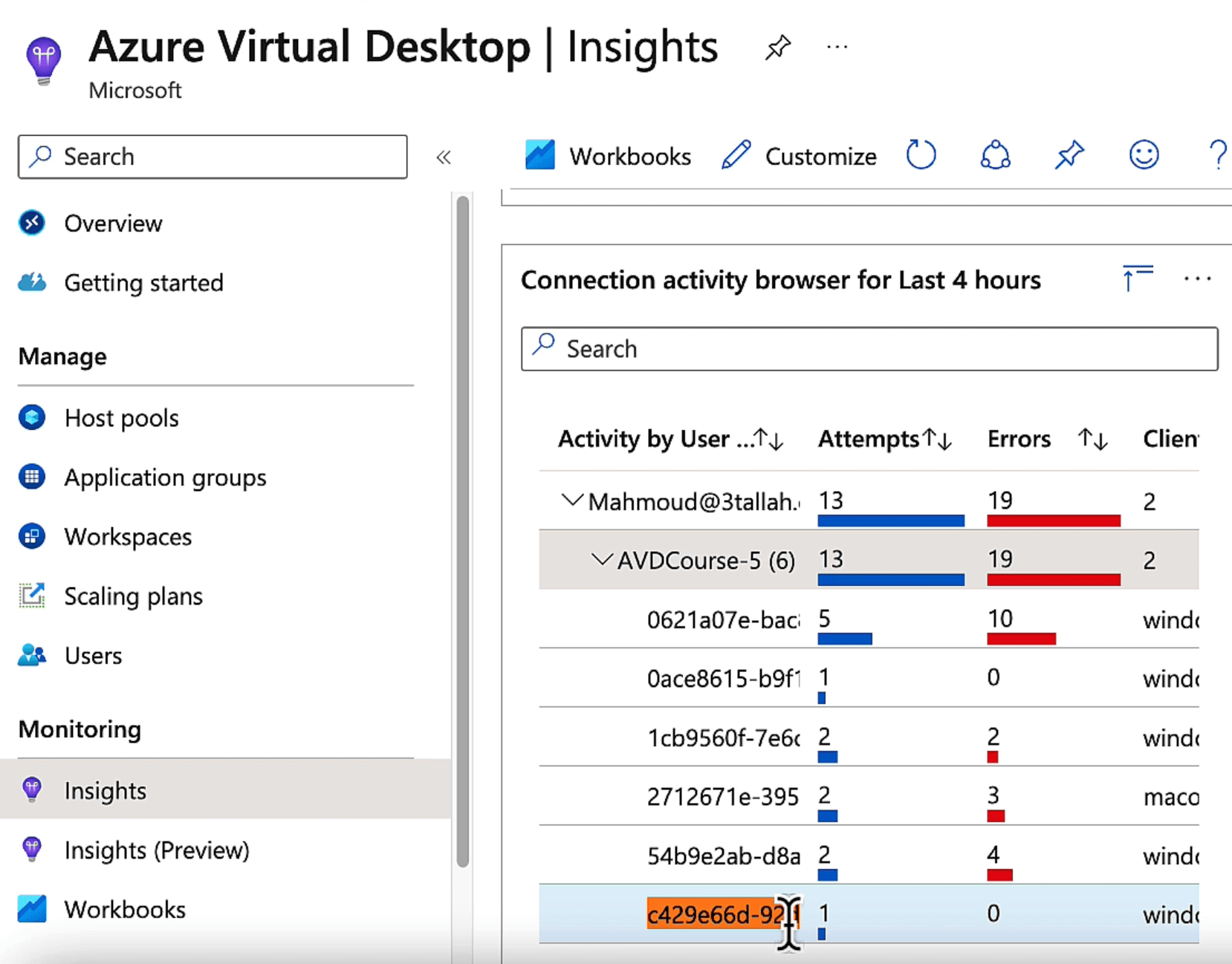
- You can look for the connection ID from the QR code in this list or export it to Excel.
Get session details using Azure Log Analytics:
- Open the Log Analytics workspace that is connected to your Azure Virtual Desktop environment.
- Start a new query, then run the following query to get session information for a specific connection ID (represented as CorrelationId in Log Analytics), replacing <connection ID> with the full or partial value from the QR code:
To get session information for a specific connection ID :
WVDConnections
|where CorrelationId contains == “<connection ID>”
How the Watermarking Feature Can Revolutionize the Way You Work
The Watermarking feature can bring a new level of visibility and control to your remote work. With this feature, organizations can:
- Traceback any unauthorized screen captures to the specific connection and user.
- Ensure the security and compliance of remote sessions.
- Streamline remote work management.
- Maximize visibility and control in remote sessions.
Conclusion:
In conclusion, the Watermarking feature of Azure Virtual Desktop is a game-changer for remote workforce management. It provides a new level of security and visibility in remote sessions and allows organizations to streamline their remote work management. Don’t miss out on this exciting new feature – set it up today and take your remote work to the next level!
Check out my Udemy course for AZ-140 Azure Virtual Desktop
Use This link for 80% OFF ❤: https://bit.ly/AVDCourseYT
To set up Watermarking on your Azure Virtual Desktop (AVD) environment, refer to the following video tutorial.


